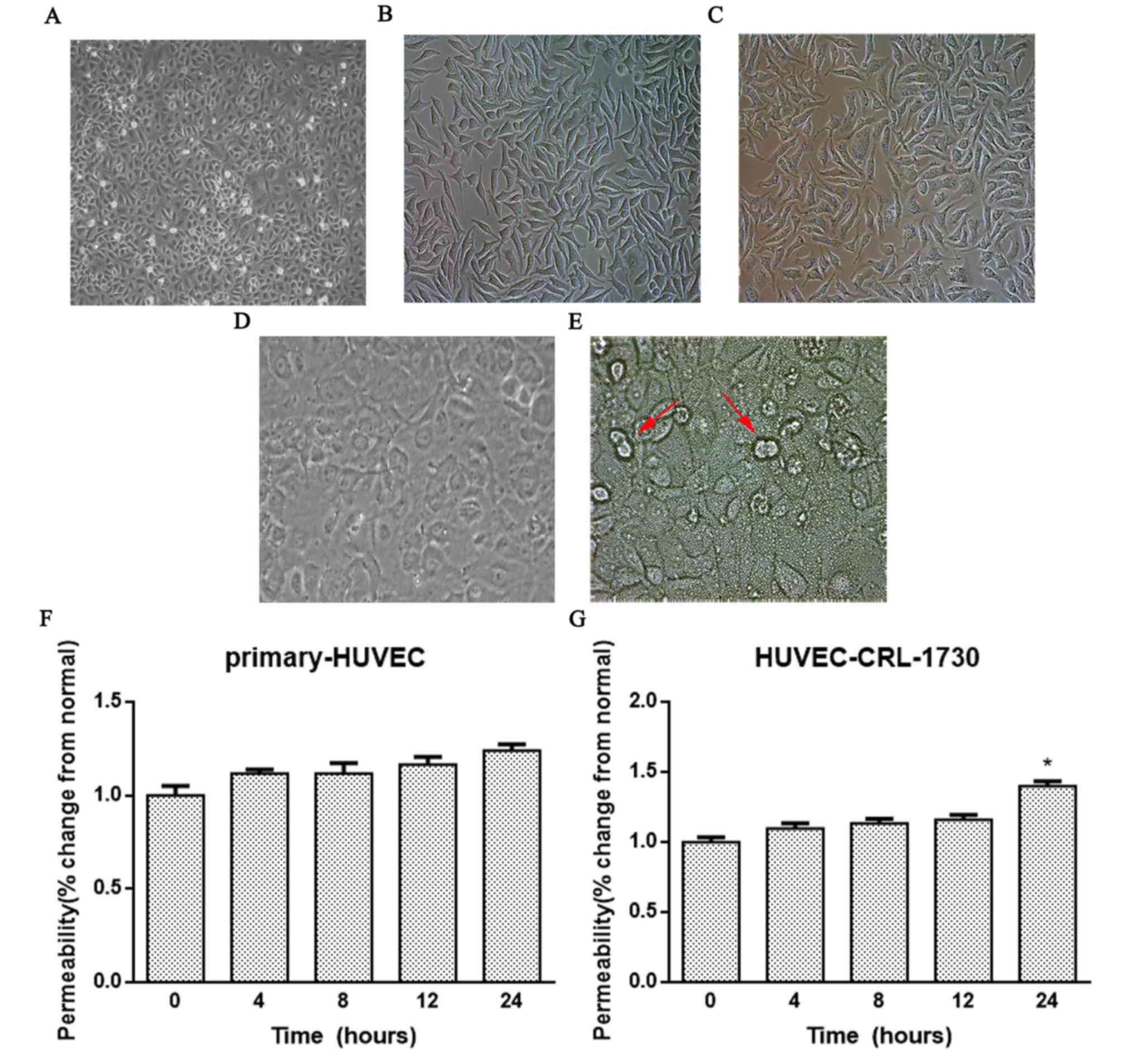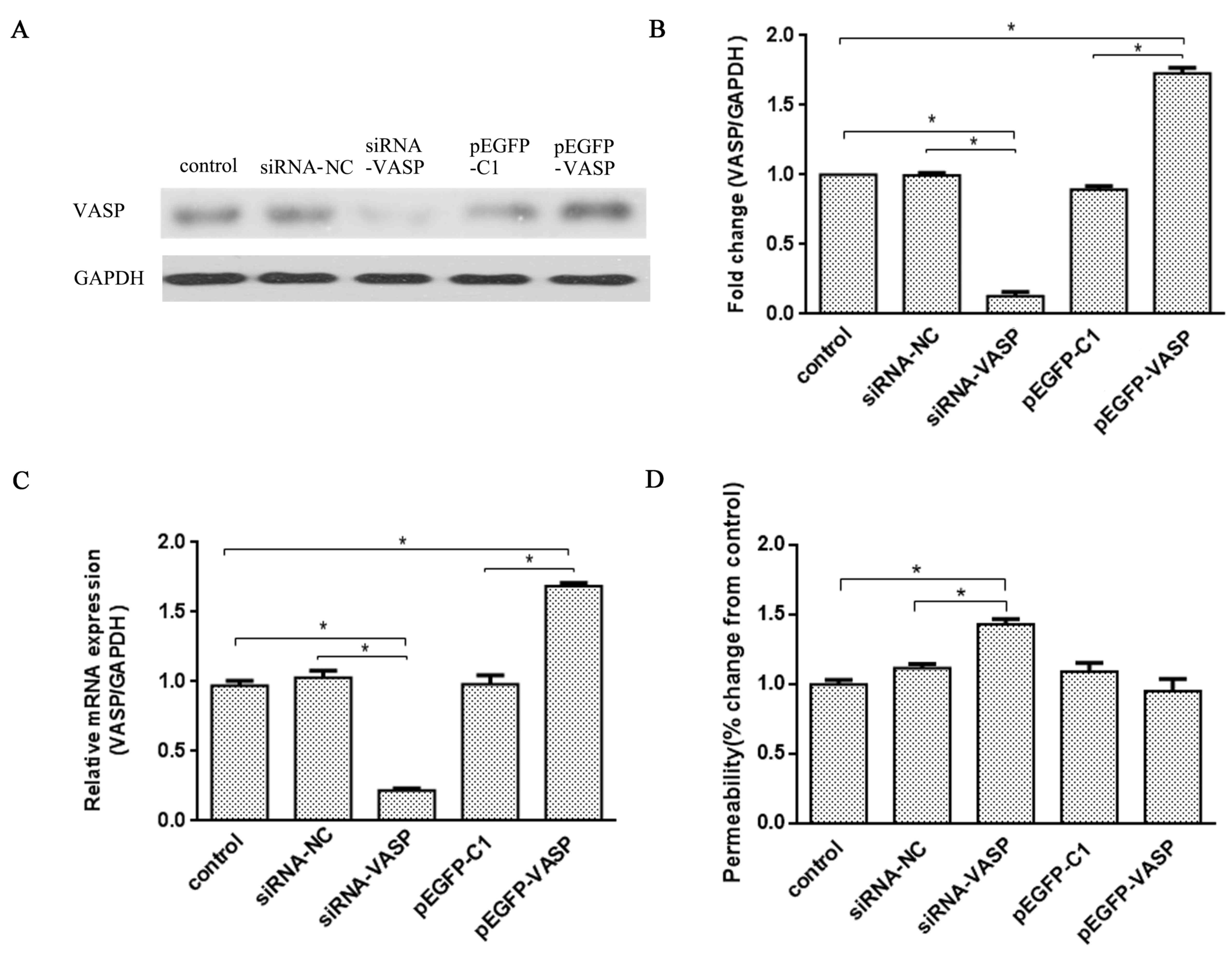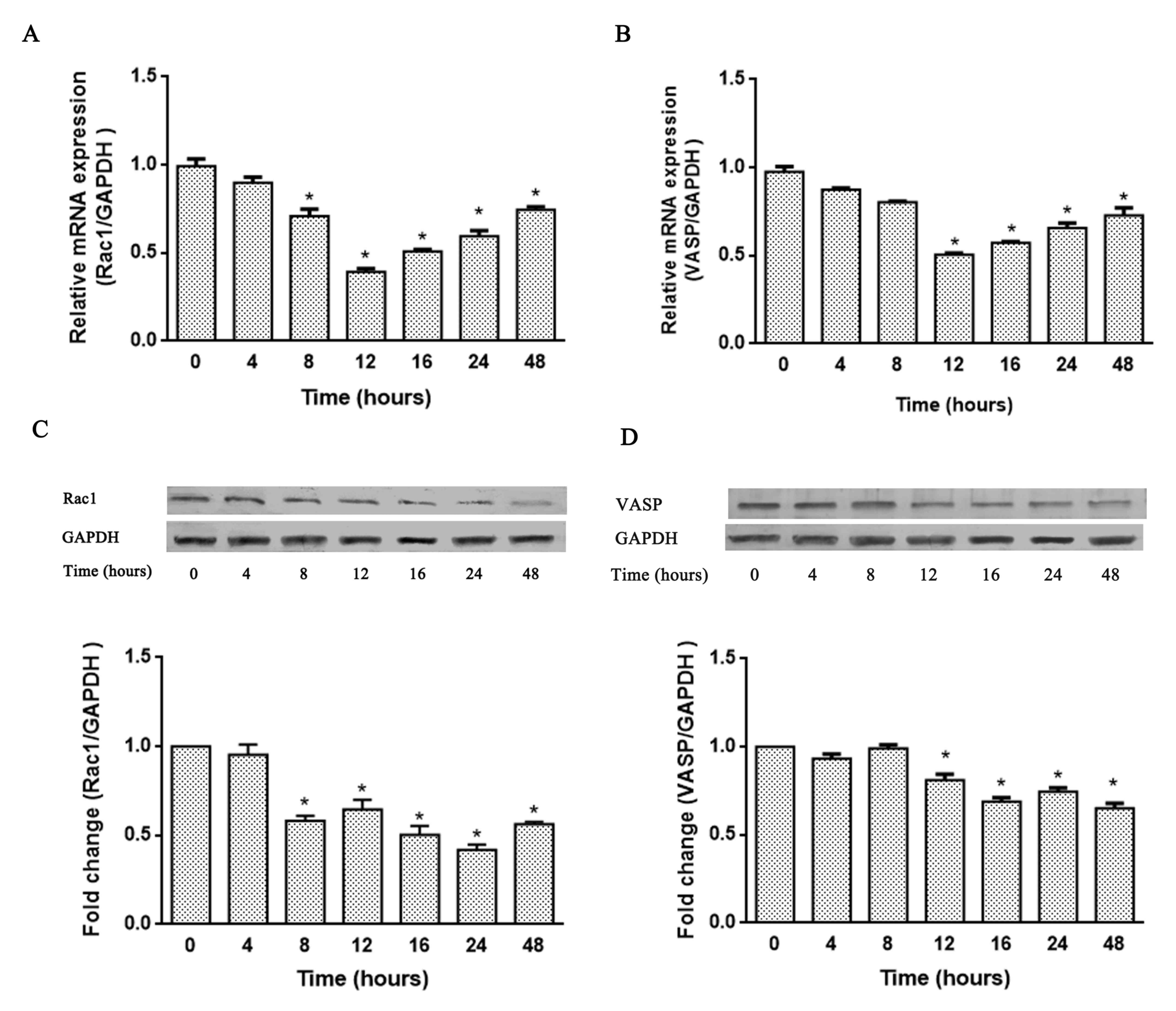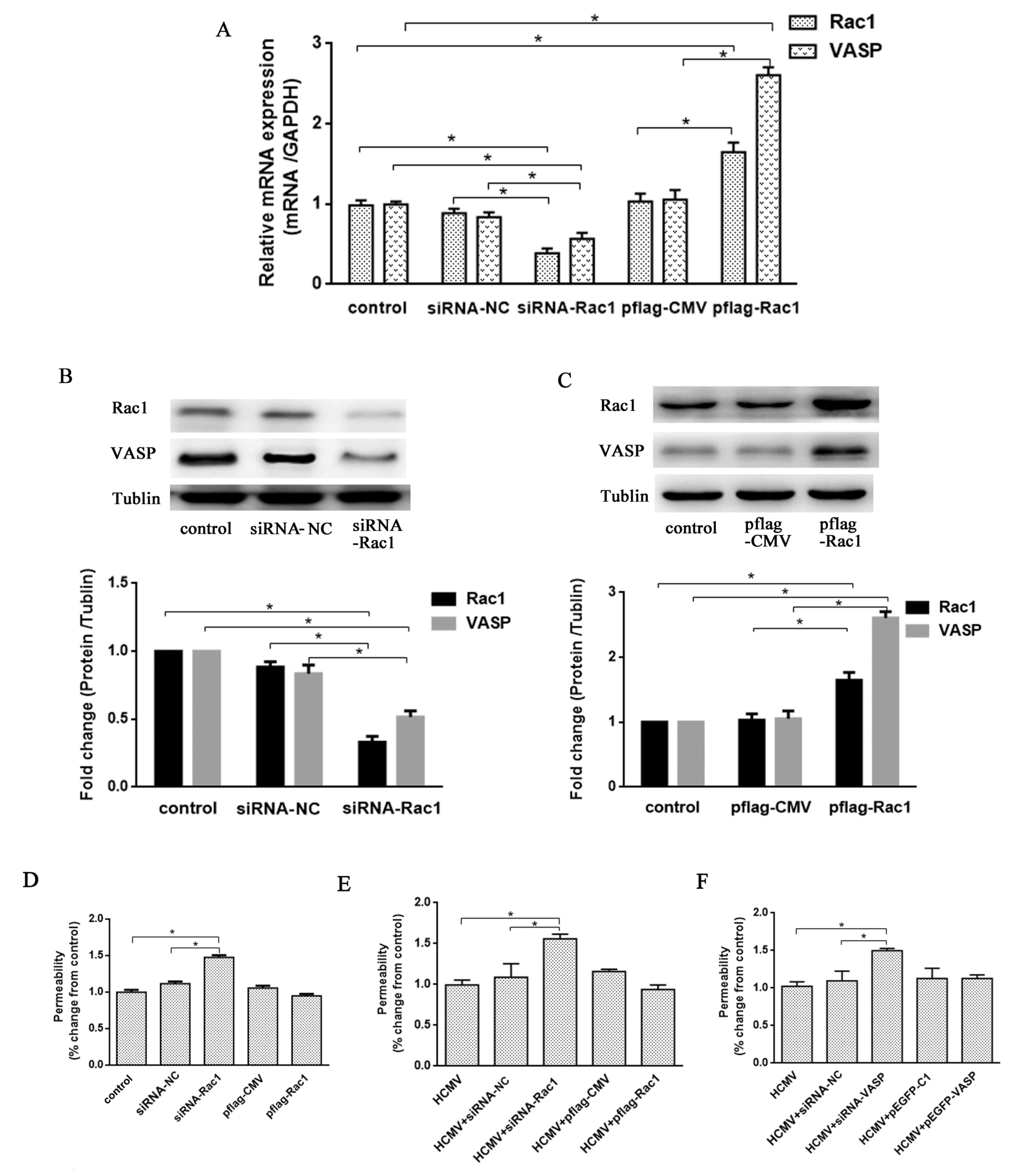|
1
|
Tarp JB, Jensen AS, Engstrom T,
Holstein-Rathlou NH and Sondergaard L: Cyanotic congenital heart
disease and atherosclerosis. Heart. 103:897–900. 2017. View Article : Google Scholar : PubMed/NCBI
|
|
2
|
Zhou YF, Leon MB, Waclawiw MA, Popma JJ,
Yu ZX, Finkel T and Epstein SE: Association between prior
cytomegalovirus infection and the risk of restenosis after coronary
atherectomy. N Engl J Med. 335:624–630. 1996. View Article : Google Scholar : PubMed/NCBI
|
|
3
|
Danesh J, Whincup P, Walker M, Lennon L,
Thomson A, Appleby P, Gallimore JR and Pepys MB: Low grade
inflammation and coronary heart disease: Prospective study and
updated meta-analyses. BMJ. 321:199–204. 2000. View Article : Google Scholar : PubMed/NCBI
|
|
4
|
Pietropaolo RL and Compton T: Direct
interaction between human cytomegalovirus glycoprotein B and
cellular annexin II. J Virol. 71:9803–9807. 1997.PubMed/NCBI
|
|
5
|
Bentz GL, Jarquin-Pardo M, Chan G, Smith
MS, Sinzger C and Yurochko AD: Human cytomegalovirus (HCMV)
infection of endothelial cells promotes naive monocyte
extravasation and transfer of productive virus to enhance
hematogenous dissemination of HCMV. J Virol. 80:11539–11555. 2006.
View Article : Google Scholar : PubMed/NCBI
|
|
6
|
Conforti G, Zanetti A, Colella S, Abbadini
M, Marchisio PC, Pytela R, Giancotti F, Tarone G, Languino LR and
Dejana E: Interaction of fibronectin with cultured human
endothelial cells: Characterization of the specific receptor.
Blood. 73:1576–1585. 1989.PubMed/NCBI
|
|
7
|
Etingin OR, Silverstein RL and Hajjar DP:
von Willebrand factor mediates platelet adhesion to virally
infected endothelial cells. Proc Natl Acad Sci USA. 90:5153–5156.
1993. View Article : Google Scholar : PubMed/NCBI
|
|
8
|
Loureiro JJ, Rubinson DA, Bear JE, Baltus
GA, Kwiatkowski AV and Gertler FB: Critical roles of
phosphorylation and actin binding motifs, but not the central
proline-rich region, for Ena/vasodilator-stimulated phosphoprotein
(VASP) function during cell migration. Mol Biol Cell. 13:2533–2546.
2002. View Article : Google Scholar : PubMed/NCBI
|
|
9
|
Comerford KM, Lawrence DW, Synnestvedt K,
Levi BP and Colgan SP: Role of vasodilator-stimulated
phosphoprotein in PKA-induced changes in endothelial junctional
permeability. FASEB J. 16:583–585. 2002. View Article : Google Scholar : PubMed/NCBI
|
|
10
|
Lawrence DW, Comerford KM and Colgan SP:
Role of VASP in reestablishment of epithelial tight junction
assembly after Ca2+ switch. Am J Physiol Cell Physiol.
282:C1235–C1245. 2002. View Article : Google Scholar : PubMed/NCBI
|
|
11
|
Ross R: Atherosclerosis-an inflammatory
disease. N Engl J Med. 340:115–126. 1999. View Article : Google Scholar : PubMed/NCBI
|
|
12
|
Lum H and Malik AB: Mechanisms of
increased endothelial permeability. Can J Physiol Pharmacol.
74:787–800. 1996. View
Article : Google Scholar : PubMed/NCBI
|
|
13
|
Hall A: Rho family GTPases. Biochem Soc
Trans. 40:1378–1382. 2012. View Article : Google Scholar : PubMed/NCBI
|
|
14
|
Rojas AM, Fuentes G, Rausell A and
Valencia A: The Ras protein superfamily: Evolutionary tree and role
of conserved amino acids. J Cell Biol. 196:189–201. 2012.
View Article : Google Scholar : PubMed/NCBI
|
|
15
|
Abbasi T and Garcia JG: Sphingolipids in
lung endothelial biology and regulation of vascular integrity.
Handb Exp Pharmacol. 201–226. 2013. View Article : Google Scholar : PubMed/NCBI
|
|
16
|
van Nieuw Amerongen GP, Beckers CM,
Achekar ID, Zeeman S, Musters RJ and van Hinsbergh VW: Involvement
of Rho kinase in endothelial barrier maintenance. Arterioscler
Thromb Vasc Biol. 27:2332–2339. 2007. View Article : Google Scholar : PubMed/NCBI
|
|
17
|
Samarin S and Nusrat A: Regulation of
epithelial apical junctional complex by Rho family GTPases. Front
Biosci (Landmark Ed). 14:1129–1142. 2009. View Article : Google Scholar : PubMed/NCBI
|
|
18
|
Kouklis P, Konstantoulaki M, Vogel S,
Broman M and Malik AB: Cdc42 regulates the restoration of
endothelial barrier function. Circ Res. 94:159–166. 2004.
View Article : Google Scholar : PubMed/NCBI
|
|
19
|
Ridley AJ, Schwartz MA, Burridge K, Firtel
RA, Ginsberg MH, Borisy G, Parsons JT and Horwitz AR: Cell
migration: Integrating signals from front to back. Science.
302:1704–1709. 2003. View Article : Google Scholar : PubMed/NCBI
|
|
20
|
Winge MCG and Marinkovich MP: Epidermal
activation of the small GTPase Rac1 in psoriasis pathogenesis.
Small GTPases. 5:1–6. 2017. View Article : Google Scholar
|
|
21
|
Wu G, Wei L, Yu A, Zhang M, Qi B, Su K, Hu
X and Wang J: Vasodilator-stimulated phosphoprotein regulates
osteosarcoma cell migration. Oncol Rep. 26:1609–1615.
2011.PubMed/NCBI
|
|
22
|
Livak KJ and Schmittgen TD: Analysis of
relative gene expression data using real-time quantitative PCR and
the 2(-Delta Delta C(T)) method. Methods. 25:402–408. 2001.
View Article : Google Scholar : PubMed/NCBI
|
|
23
|
Schlegel N and Waschke J: VASP is involved
in cAMP-mediated Rac 1 activation in microvascular endothelial
cells. Am J Physiol Cell Physiol. 296:C453–C462. 2009. View Article : Google Scholar : PubMed/NCBI
|
|
24
|
Writing Group M, Mozaffarian D, Benjamin
EJ, Go AS, Arnett DK, Blaha MJ, Cushman M, Das SR, de Ferranti S,
Despres JP, et al: Heart disease and stroke statistics-2016 update:
A report from the american heart association. Circulation.
133:e38–e360. 2016. View Article : Google Scholar : PubMed/NCBI
|
|
25
|
Ross R: The pathogenesis of
atherosclerosis-an update. N Engl J Med. 314:488–500. 1986.
View Article : Google Scholar : PubMed/NCBI
|
|
26
|
Wang Z, Cai J, Zhang M, Wang X, Chi H,
Feng H and Yang X: Positive expression of human cytomegalovirus
phosphoprotein 65 in atherosclerosis. Biomed Res Int.
2016:40676852016. View Article : Google Scholar : PubMed/NCBI
|
|
27
|
Kreutmayer S, Csordas A, Kern J, Maass V,
Almanzar G, Offterdinger M, Ollinger R, Maass M and Wick G:
Chlamydia pneumoniae infection acts as an endothelial stressor with
the potential to initiate the earliest heat shock protein
60-dependent inflammatory stage of atherosclerosis. Cell Stress
Chaperones. 18:259–268. 2013. View Article : Google Scholar : PubMed/NCBI
|
|
28
|
Yi L, Lin JY, Gao Y, Feng ZJ and Wang DX:
Detection of human cytomegalovirus in the atherosclerotic cerebral
arteries in han population in china. Acta Virol. 52:99–106.
2008.PubMed/NCBI
|
|
29
|
Blum A, Peleg A and Weinberg M:
Anti-cytomegalovirus (CMV) IgG antibody titer in patients with risk
factors to atherosclerosis. Clin Exp Med. 3:157–160. 2003.
View Article : Google Scholar : PubMed/NCBI
|
|
30
|
Adam E, Melnick JL, Probtsfield JL, Petrie
BL, Burek J, Bailey KR, McCollum CH and DeBakey ME: High levels of
cytomegalovirus antibody in patients requiring vascular surgery for
atherosclerosis. Lancet. 2:291–293. 1987. View Article : Google Scholar : PubMed/NCBI
|
|
31
|
Badimon L and Vilahur G: Thrombosis
formation on atherosclerotic lesions and plaque rupture. J Intern
Med. 276:618–632. 2014. View Article : Google Scholar : PubMed/NCBI
|
|
32
|
Baumer Y, Drenckhahn D and Waschke J: cAMP
induced Rac 1-mediated cytoskeletal reorganization in microvascular
endothelium. Histochem Cell Biol. 129:765–778. 2008. View Article : Google Scholar : PubMed/NCBI
|
|
33
|
Birukova AA, Zagranichnaya T, Fu P,
Alekseeva E, Chen W, Jacobson JR and Birukov KG: Prostaglandins
PGE(2) and PGI(2) promote endothelial barrier enhancement via PKA-
and Epac1/Rap1-dependent Rac activation. Exp Cell Res.
313:2504–2520. 2007. View Article : Google Scholar : PubMed/NCBI
|
|
34
|
Li YS, Haga JH and Chien S: Molecular
basis of the effects of shear stress on vascular endothelial cells.
J Biomech. 38:1949–1971. 2005. View Article : Google Scholar : PubMed/NCBI
|
|
35
|
Schmit MA, Mirakaj V, Stangassinger M,
Konig K, Kohler D and Rosenberger P: Vasodilator phosphostimulated
protein (VASP) protects endothelial barrier function during
hypoxia. Inflammation. 35:566–573. 2012. View Article : Google Scholar : PubMed/NCBI
|
|
36
|
Rentsendorj O, Mirzapoiazova T, Adyshev D,
Servinsky LE, Renne T, Verin AD and Pearse DB: Role of
vasodilator-stimulated phosphoprotein in cGMP-mediated protection
of human pulmonary artery endothelial barrier function. Am J
Physiol Lung Cell Mol Physiol. 294:L686–L697. 2008. View Article : Google Scholar : PubMed/NCBI
|
|
37
|
Schlegel N, Burger S, Golenhofen N, Walter
U, Drenckhahn D and Waschke J: The role of VASP in regulation of
cAMP- and Rac 1-mediated endothelial barrier stabilization. Am J
Physiol Cell Physiol. 294:C178–C188. 2008. View Article : Google Scholar : PubMed/NCBI
|
|
38
|
Profirovic J, Han J, Andreeva AV, Neamu
RF, Pavlovic S, Vogel SM, Walter U and Voyno-Yasenetskaya TA:
Vasodilator-stimulated phosphoprotein deficiency potentiates
PAR-1-induced increase in endothelial permeability in mouse lungs.
J Cell Physiol. 226:1255–1264. 2011. View Article : Google Scholar : PubMed/NCBI
|
|
39
|
Luyer MD, Buurman WA, Hadfoune M, Jacobs
JA, Konstantinov SR, Dejong CH and Greve JW: Pretreatment with
high-fat enteral nutrition reduces endotoxin and tumor necrosis
factor-alpha and preserves gut barrier function early after
hemorrhagic shock. Shock. 21:65–71. 2004. View Article : Google Scholar : PubMed/NCBI
|
|
40
|
Bogatcheva NV, Zemskova MA, Kovalenkov Y,
Poirier C and Verin AD: Molecular mechanisms mediating protective
effect of cAMP on lipopolysaccharide (LPS)-induced human lung
microvascular endothelial cells (HLMVEC) hyperpermeability. J Cell
Physiol. 221:750–759. 2009. View Article : Google Scholar : PubMed/NCBI
|
|
41
|
Ikari A, Ito M, Okude C, Sawada H, Harada
H, Degawa M, Sakai H, Takahashi T, Sugatani J and Miwa M:
Claudin-16 is directly phosphorylated by protein kinase A
independently of a vasodilator-stimulated phosphoprotein-mediated
pathway. J Cell Physiol. 214:221–229. 2008. View Article : Google Scholar : PubMed/NCBI
|
|
42
|
Caposio P, Dreano M, Garotta G, Gribaudo G
and Landolfo S: Human cytomegalovirus stimulates cellular IKK2
activity and requires the enzyme for productive replication. J
Virol. 78:3190–3195. 2004. View Article : Google Scholar : PubMed/NCBI
|
|
43
|
Frede S, Stockmann C, Freitag P and
Fandrey J: Bacterial lipopolysaccharide induces HIF-1 activation in
human monocytes via p44/42 MAPK and NF-kappaB. Biochem J.
396:517–527. 2006. View Article : Google Scholar : PubMed/NCBI
|













